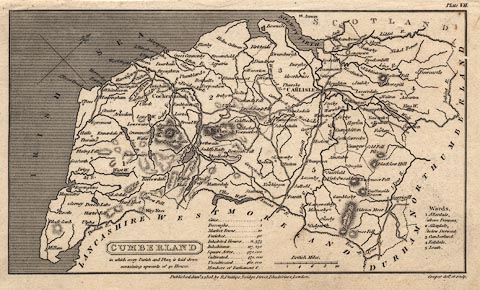




placename:- Alston Moor
placename:- Aldston Moor
 click to enlarge
click to enlargeCOP3.jpg
"Aldston Moor"
area
item:- JandMN : 86
Image © see bottom of page
item:- lead mine; mine
 goto source
goto sourceGentleman's Magazine 1852 part 2 p.396
antiquarian meeting:- "..."
"Mr. Thomas Sopwith, of Newcastle, read a paper on the Lead Mines of the North of England, arranging his notices under the separate heads of a description of the districts in which the principal mines are situated, of notices of the various charters under which lead mines were worked in the early periods of English history, and the gradual stages by which successive improvements were introduced. The Romans occupied the lead mines at Alston Moor, and one of the most perfect of their stations now remaining is at Whitley, three miles north of Alston. There could be no doubt that they exercised, during their occupation of our mining districts for three or four centuries, the knowledge which they possessed of the metallurgic arts. Caesar, indeed, expressly mentioned as one of his reasons for invading Britain, the assistance which the inhabitants rendered to the Gauls from their treasures. The terms upon which mining operations were permitted by the lords of the soil at various periods form a curious class of records. In 1426 Henry VI. granted to John Duke of Bedford "all mines of gold and silver within his kingdom of England for ten years, paying the tenth part to the holy church, to the king the fifteenth, and to the lord of the soil the twentieth part." One of the prominent features illustrated by Mr. Sopwith was the former abundance of wood in the mountainous districts, which are now almost treeless, and the rapid removal of which was owing to the vast quantities of fuel required by the miners. The several rates of duty under which the mines were held, and other conditions, were noticed, and a general view was taken of the introduction of successive improvements connected with the lead mines of Northumberland and the adjacent counties. The paper was illustrated by diagrams, showing the produce of the mines at different periods, and by tables of detailed statements relating to mining statistics. Mr. Sopwith adverted, in conclusion, to the paucity of mining records of past times, and the value of them in connexion with mining interests."
"..."
